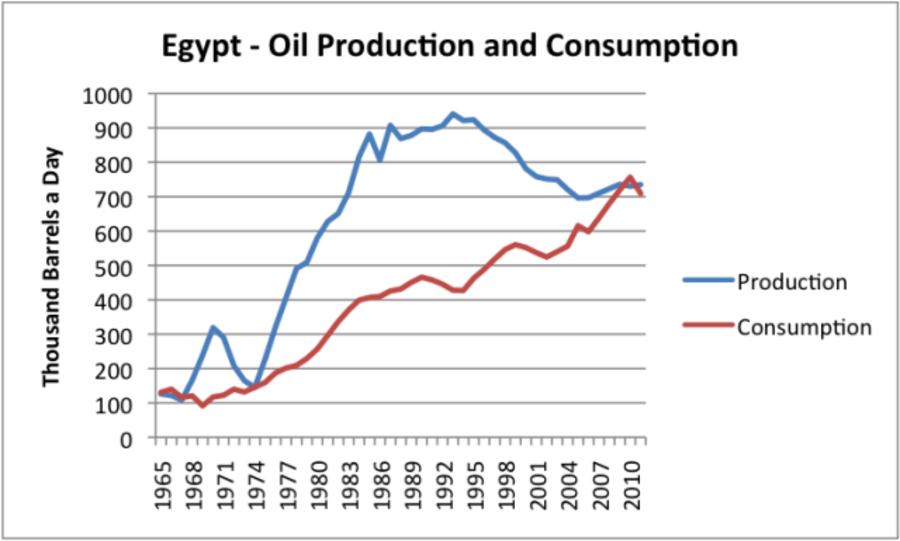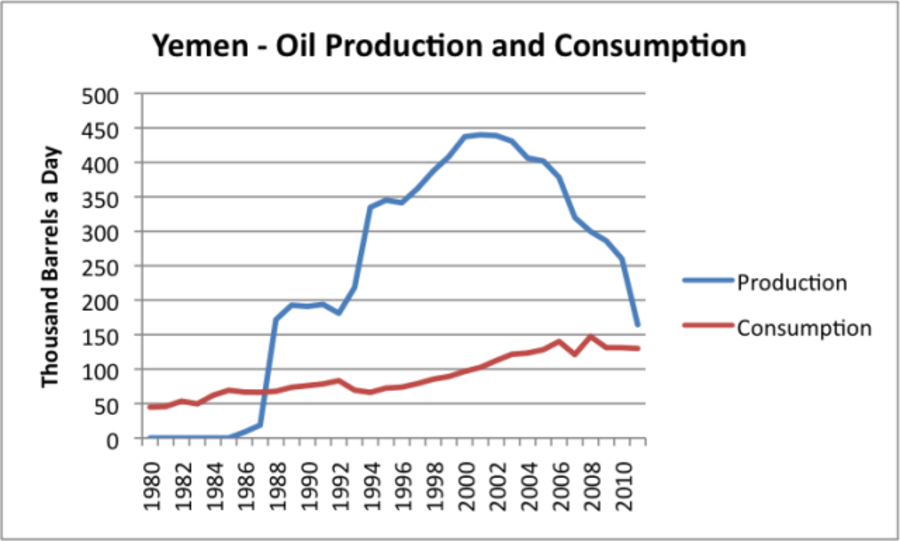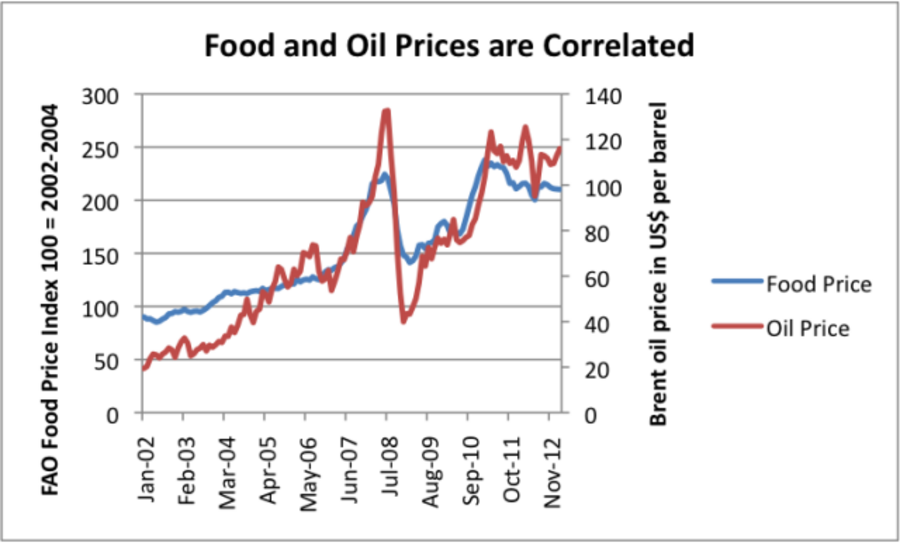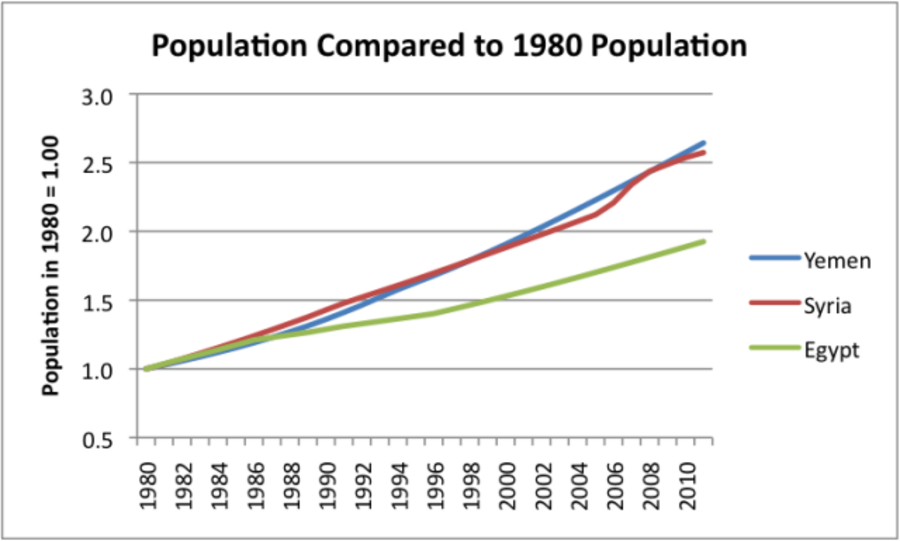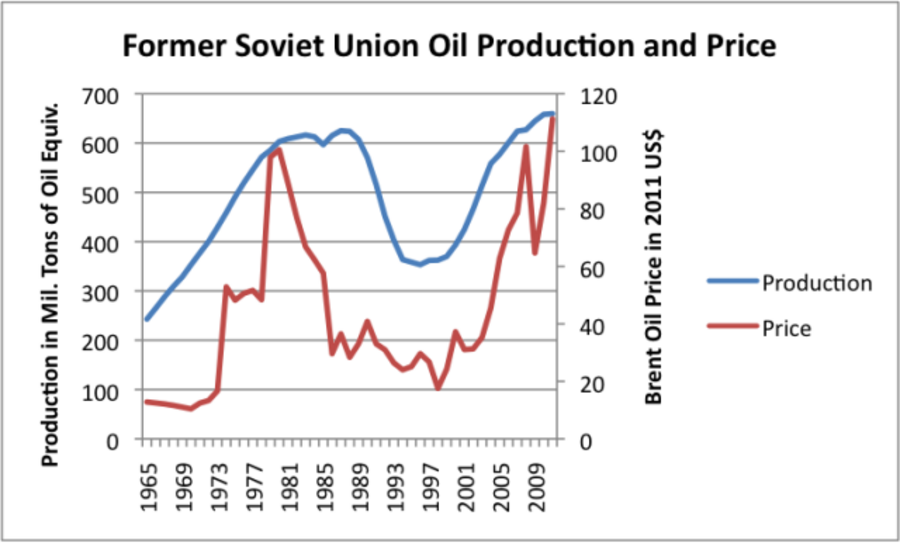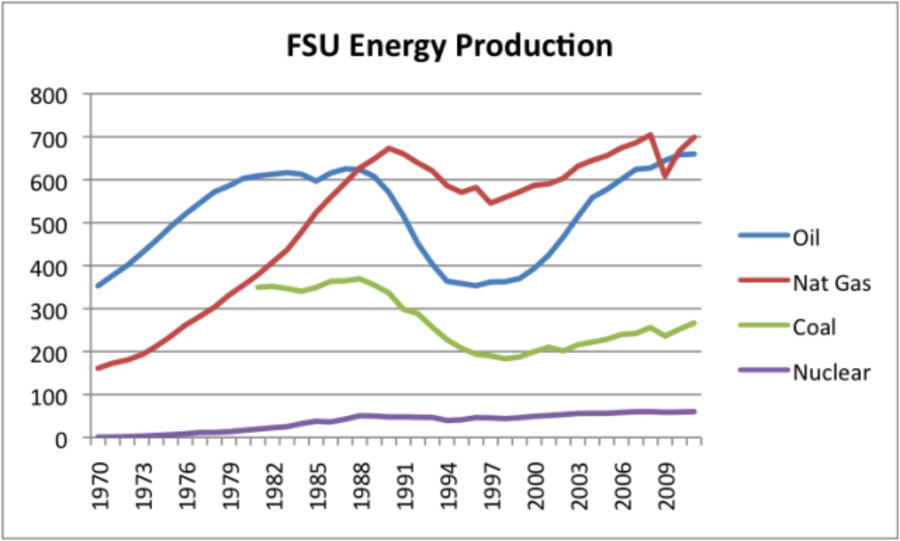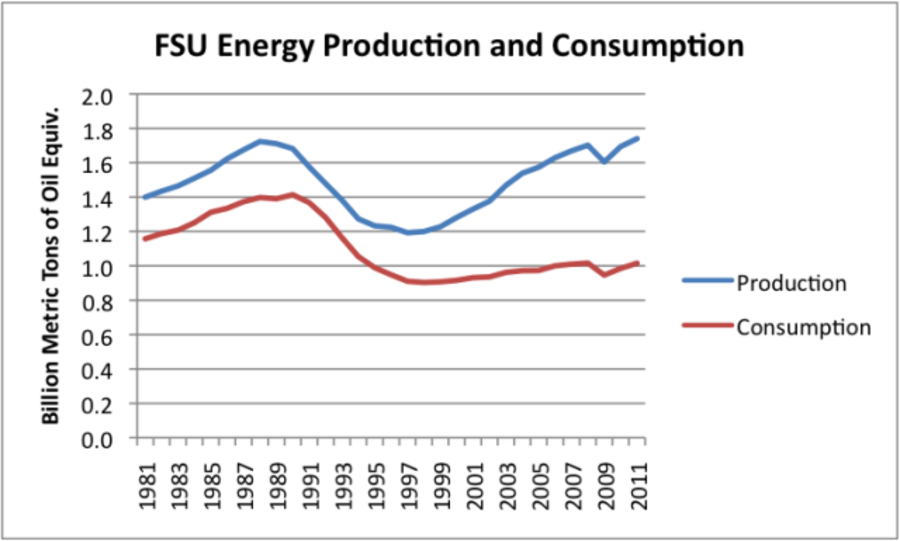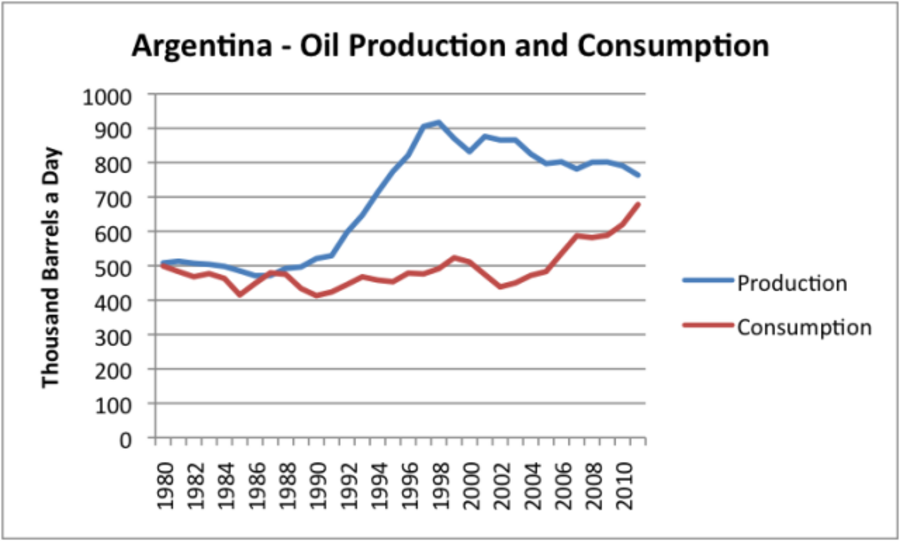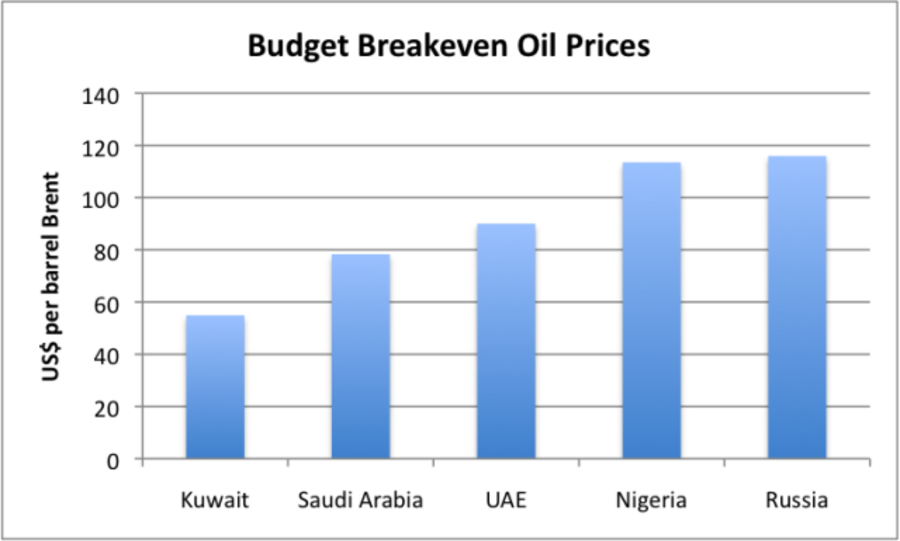How oil exporters reach financial collapse
Loading...
Recently, I explained how high oil prices can bring on financial collapse for oil importers. In this post, I’ll discuss the flip side of the situation: how oil exporters reach financial collapse.
Unfortunately, we have many examples of countries that were oil exporters, but are dealing with collapse situations. Egypt, Syria, and Yemen all have had political disruptions since 2011. These may not be called financial collapse, but they all took place as the country’s oil exports decreased and as the price of imported food rose. Another example is the Former Soviet Union (FSU). It collapsed in 1991, after a period of low oil prices, in what looks very much like a financial collapse.
There are several dynamics at work in the financial collapse of oil exporters:
- Oil exporters are often dependent on oil export revenue to fund government programs.
- The need for government programs grows as population grows and as the price of food rises.
- The amount of oil that can be extracted in a given year often declines over time, as initial stores are depleted.
- Exports often decline even more rapidly than oil supply, because of rising oil consumption as population grows.
In general, high oil prices are good for oil exporters (except the effect on food prices). At the same time, oil importers strongly prefer low oil prices. As a result, we end up with a price tug of war between oil importers and oil exporters.
One additional issue is declining Energy Return on Energy Invested. Countries often have the option of reducing their rate of decline by adding production in areas which are more expensive to drill (say deeper, smaller locations offshore Norway) or by using enhanced oil recovery methods. Such approaches add costs (and energy use), and further add to the price that oil exporters need for their product.
Egypt, Syria, and Yemen
Egypt, Syria, and Yemen are three countries that the press would say are suffering from the continuing impact of the Arab Spring revolutions, which began in 2011, or of civil war. The similarity of the oil production and consumption charts for the three countries (shown below) suggests that declining oil exports likely played a major role as well.
In all three countries, oil production rose and then began to fall (Figures 1, 2, and 3). At the same time, oil consumption rose. The two lines–production and consumption–come very close to meeting in 2011, indicating that oil exports are at that point dropping to 0.
To make matters worse, the three countries are in an arid part of the world, where a large share of food must be imported. Oil prices and food prices tend to rise at the same time (Figure 4, below). By 2011, both food and oil prices were high. In fact, both prices have tended to stay high. Now, these countries find themselves with the unpleasant problem of paying for the higher cost of imported food (grown and transported with oil), so indirectly they are becoming an oil importer instead of an oil exporter.
Faced with less revenue from oil exports, and higher prices of food imports, these countries find themselves with a permanent mismatch between revenue and expenses. Part of the revenue mismatch relates to subsidies offered to poor residents. With higher food and oil prices, the funding needed for subsidies rises rapidly, even as oil exports drop to close to zero.
One issue that makes the situation worse is the huge rise in population that came with increased prosperity. Population has nearly doubled since 1980 in Egypt, and has more than doubled in both Syria and Yemen (Figure 5, below).
All in all, the situation is very bad. These countries admittedly do have other resources, such as grazing land for animals, food crop production, and in some cases natural gas exports, but the loss of oil exports puts a hole in their budgets. If oil production continues to drop in the future, both jobs and local oil consumption are likely to be affected as well. (This is a link to a post I wrote about the Egyptian situation two years ago.)
I tried to put together an index of the relative dependence of various countries on oil exports, by comparing the value of oil exports to Gross National Income. Based on exports before the recent drop-off, Yemen’s index is around 30%; Syria and Egypt are a little under 10%. The index no doubt understates the role of oil, because it does not include the oil the country uses itself, or the impact of any natural gas industry. It also excludes indirect jobs, like that of grocery store owner or taxi driver.
If Egypt and Syria are indeed collapsing with what seems like low dependence on oil exports, it makes one wonder about the impact if Saudi Arabia’s (index over 70%) or Libya’s (index about 60%) oil extraction would drop.
The Collapse of the Former Soviet Union
The Soviet Union was an oil exporter and a major world power, prior to its collapse in 1991. While there aremany views as to what led to this collapse, one issue seems to be a drop in oil price in the early 1980s.
The drop in oil prices did not lead to an immediate decline in oil production (Figure 6), most likely because the cost of maintaining production on a field that has recently developed, is low for a few years. What is expensive is the up-front cost of bringing new fields on line. These were not added, causing a decline in production, after a few years.
Russia’s energy data shows the marks of the financial collapse building, prior to 1991. Revenue from oil exports dropped in the mid 1980s, because of the lower oil price. Oil production started declining in 1987, four years before the collapse. Other types of energy production started declining as well, as if a recession were underway, pulling the economy down in all areas.
Every type of energy production (except hydropower, not shown) dropped back during this period, even coal and nuclear, with decreases beginning prior to 1991. Population growth started slowing prior to 1991 as well. Eventually, the government collapsed, after continuing recession.
The FSU never regained its former stature as a manufacturing country, even when oil production rose, after oil prices rebounded. With little manufacturing, energy consumption has remained far below its pre-1991 levels (Figure 8).
I visited Russia in 2012, and saw for myself a little of the current situation. One problem is that its cost structure (based primarily on oil and gas which is now high-priced, and workers who need wages to pay for these fuels) is not competitive with the low-cost structure of the Chinese and Indians. Another issue is the poor condition of Russia’s infrastructure (roads, bridges, water pipelines, etc.) due to neglect during the time of its collapse. With the high cost of oil, it is expensive to make repairs and add new infrastructure.
In terms of my index, Russia’s oil exports now amount to a little less than 20% of Gross National Income.
Collapse in Countries with Declining Exports
Egypt, Syria, and Yemen are examples of countries whose exports have pretty much disappeared, causing great crisis. But how about countries with earlier declines in production? To some extent, there were not many problems in the 2003 to 2008 period, because declines in oil exports could often be offset by increases in oil prices.
One country that stands out, though, is Argentina, with problems both before and after the 2003-2008 period.
Argentina’s oil production hit a peak in 1998, and began dropping in 1999. Oil prices were at an unusually low level in the 1998 to 2002 period. This timing coincided precisely with it first economic crisis, which came in 1999 to 2002. Oil prices rose in the 2003 to 2008 period, and Argentina’s problems seemed to disappear.
Now Argentina’s oil exports are very low, and in 2012 and 2013, the country is again having financial problems. Argentina’s economy is well diversified, so a person wouldn’t think that oil would play a big role. (My index of the role of oil exports was only about 2%, as of 2008.) But oil problems overlay any other problems a country may have. If a country has a tendency to overspend its income, or over-promise subsidies, any reduction in oil income will tend to magnify this effect. When making plans, it is easy to overlook the fact that the benefit from oil income is temporary.
Target Break-Even Brent Oil Prices
Many large oil exporters include revenue from oil exports in a country’s annual budget. This is quite different from the cost of pulling the oil out of the ground. It is the money governments collect, as taxes or revenue sharing agreements or leases, to support their programs. With rising population, and often with declining exports, oil exporters find that they need higher prices each year, just to make their budgets balance.
Figure 10 provides some Deutche Bank estimates of budget break-even oil prices.
Note that the indicated break-even prices for Nigeria and Russia are above current Brent price levels. (The current Brent Crude oil price is $106.) An estimate from Energy Policy Information Center (EPIC) shows Venezuela’s break-even price to be a little higher than Russia’s, and Iran’s between that of Nigeria and Russia. According to EPIC, Iraq’s break-even is in the $80 to $100 barrel range. The Saudi Arabian oil minister was quoted on January 16, 2013 as saying that the country needs oil prices averaging $100 barrel.
One concern is that these break-even prices will keep rising. Another concern is that countries “at the margin” will find it difficult to reach their price targets.
One country of concern is Venezuela. It has a very high break-even price, and recently underwent a leadership change. It also has a tendency to spend oil revenue, even before the oil is pulled from the ground, through loan programs from the Chinese.
Venezuela’s exports are lower than in some previous years (Figure 11, above), but with the rise in the price per barrel, the dollar value has perhaps risen–this really depends on the price negotiated by China. With funds spent before the oil is produced, Venezuela can easily get itself into a trap, if “regular” oil production drops, or if it is difficult to ramp up new planned production.
Venezuela’s oil export index is about 20%, which is similar to Russia’s and Norway’s.
In general, oil exporters with declining oil production face worrisome situations. Reduced oil exports present a drag on the economy unless oil prices are rising rapidly. If oil prices do not keep rising rapidly, oil exporters will need to cut back on social programs–something that will not be well-accepted by citizens. Furthermore, adding new industries to take the place of missing oil supply may be difficult. There may even be a reduction in oil supply available to world market, if civil disorder causes a loss of production which would otherwise reach the export market.






